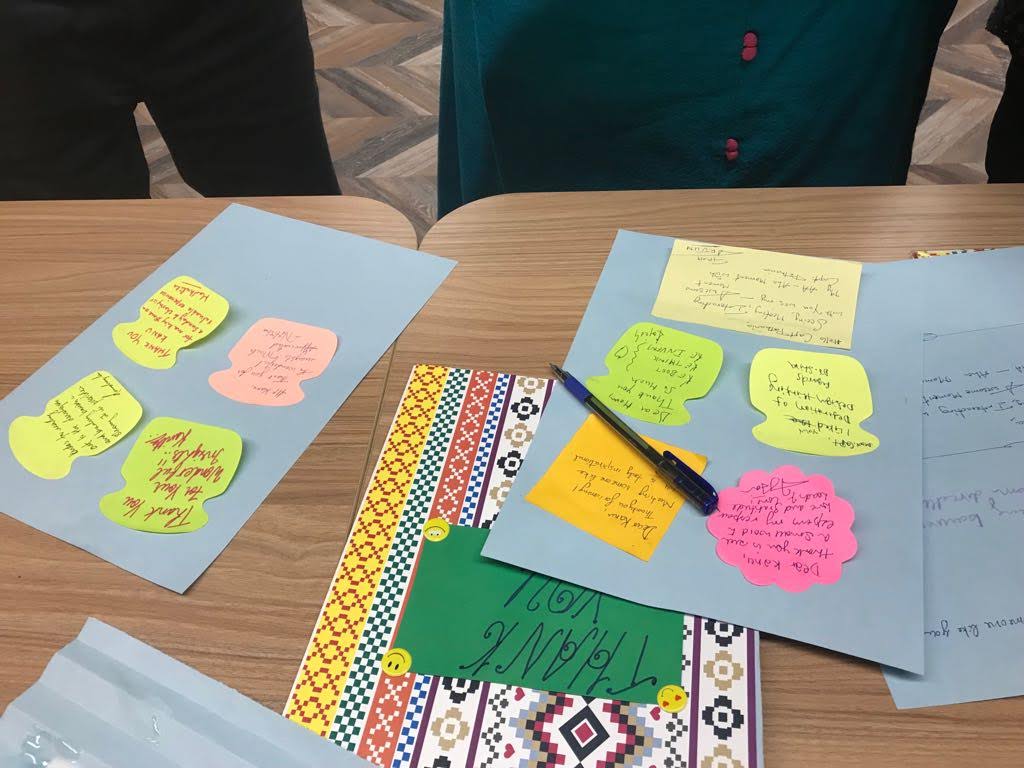
The Storytelling and Design Thinking Workshop is a hands-on, immersive session aimed at helping participants understand the power of storytelling and how it can be integrated with Design Thinking to create innovative solutions. The workshop combines two powerful methodologies: storytelling, which taps into human emotion and connection, and Design Thinking, which focuses on empathy, ideation, and prototyping to solve complex problems.
This workshop will help participants develop key skills in both creative communication and problem-solving, ultimately enabling them to craft compelling narratives that drive innovation.
Key Objectives:
- To understand the fundamentals of Design Thinking and its five stages: Empathize, Define, Ideate, Prototype, and Test.
- To explore the role of Storytelling in the design process and how it can be used to communicate ideas, insights, and solutions effectively.
- To learn how Storytelling and Design Thinking complement each other, driving user-centered innovation.
- To enhance creativity, collaboration, and critical thinking through interactive activities and group exercises.
Agenda:
1. Introduction to Storytelling and Design Thinking
- What is Design Thinking?
- Understanding the human-centered approach to problem-solving.
- The five stages of Design Thinking: Empathize, Define, Ideate, Prototype, and Test.
- Why Storytelling Matters in Design Thinking?
- The power of narratives in engaging stakeholders and driving change.
- How stories influence perception, understanding, and action.
- Key benefits of combining storytelling with Design Thinking in the innovation process.
2. The Fundamentals of Storytelling
- The Power of a Good Story:
- How stories can create emotional connections and convey complex ideas simply.
- Key components of storytelling: Characters, Conflict, Resolution.
- Types of Stories in Design:
- User Journey Stories
- Case Studies & Customer Stories
- Visionary Stories
- The Storytelling Structure:
- Beginning: Setting the Context and Problem
- Middle: The Challenge or Conflict
- End: Resolution and Outcome
- Storytelling Techniques:
- Show, don’t tell
- Evoking emotion through visuals, language, and metaphors
3. Design Thinking in Action
- Empathy and User-Centered Design:
- How to empathize with users and gather insights to build your story.
- Conducting interviews, observations, and surveys to understand pain points.
- Defining the Problem:
- Crafting the narrative around the core challenge based on user insights.
- Writing problem statements that resonate with your audience.
- Ideation and Brainstorming:
- Using storytelling as a tool to facilitate creative ideation.
- How narratives can inspire breakthrough ideas.
- Prototyping and Testing:
- Telling the story of your prototype: what, why, and how.
- Collecting feedback to refine the narrative.
4. Combining Storytelling and Design Thinking
- Using Storytelling in Each Stage of Design Thinking:
- Empathizing through the story of the user’s experience.
- Defining the problem through a compelling narrative.
- Ideating with storytelling to generate diverse and creative ideas.
- Prototyping and communicating the prototype through a story.
- Testing and refining the solution through narrative feedback.
- Creating a Cohesive Story of the Design Process:
- How to weave together the journey of discovery, ideation, and prototyping into a coherent and compelling story.
- Communicating Ideas to Stakeholders:
- Using storytelling to pitch and sell your ideas to leadership, investors, or clients.
5. Hands-On Activities and Group Work
- Empathy Mapping Exercise:
- Teams conduct user interviews to understand pain points and create empathy maps.
- Storyboarding:
- Create a storyboard that reflects the user’s journey, including emotions, thoughts, and behaviors.
- Group Brainstorming:
- Using storytelling to generate new ideas and solutions for a specific problem.
- Pitching Your Solution:
- Present your prototype and its impact through a well-crafted narrative.
6. Wrap-Up and Key Takeaways
- Reflections on Storytelling in Design Thinking:
- How storytelling enhances the Design Thinking process.
- The importance of human-centered narratives in innovation.
- Action Plan:
- How to apply storytelling techniques in your own design work or projects.
- Resources for Further Learning:
- Recommended books, articles, and tools for further exploration of storytelling and Design Thinking.
Benefits of Attending the Workshop:
- Enhanced Communication Skills: Learn how to communicate complex ideas and solutions effectively using storytelling techniques.
- Innovative Problem-Solving: Gain a deeper understanding of Design Thinking and how to approach challenges with empathy and creativity.
- Collaboration and Teamwork: Engage in hands-on activities that foster collaboration and inspire new ways of thinking.
- Improved Engagement with Stakeholders: Learn to present your ideas in a way that resonates emotionally with your audience and stakeholders.
Who Should Attend:
- Product Managers
- Designers (UX/UI, Graphic Designers)
- Marketing Teams
- Entrepreneurs and Startups
- Anyone involved in customer-centric or innovation-driven projects
Conclusion: This workshop is designed to empower professionals with the tools to use storytelling as a strategic tool in the Design Thinking process, helping them create more meaningful and impactful products, services, or solutions. By integrating the art of storytelling with the methodology of Design Thinking, participants will be equipped to engage users, clients, and stakeholders, and drive innovation through compelling narratives.

